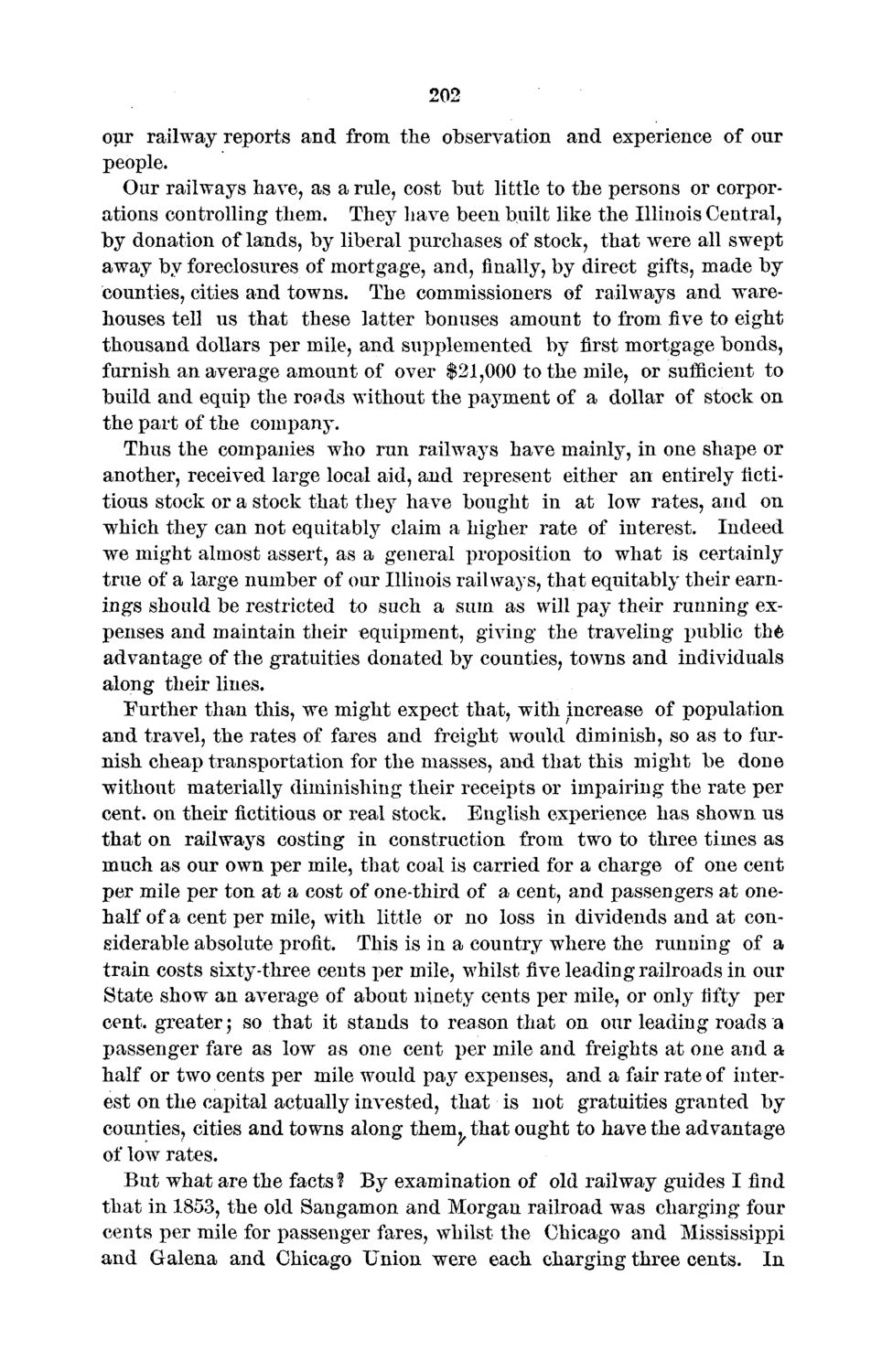| |
| |
Caption: Board of Trustees Minutes - 1872
This is a reduced-resolution page image for fast online browsing.

EXTRACTED TEXT FROM PAGE:
202 our railway reports and from the observation and experience of our people. Our railways have, as a rule, cost but little to the persons or corporations controlling them. They have been built like the Illinois Central, by donation of lands, by liberal purchases of stock, that were all swept away by foreclosures of mortgage, and, finally, by direct gifts, made by counties, cities and towns. The commissioners of railways and warehouses tell us that these latter bonuses amount to from five to eight thousand dollars per mile, and supplemented by first mortgage bonds, furnish an average amount of over $21,000 to the mile, or sufficient to build and equip the roads without the payment of a dollar of stock on the part of the company. Thus the companies who run railways have ruainly, in one shape or another, received large local aid, and represent either an entirely fictitious stock or a stock that they have bought in at low rates, and on which they can not equitably claim a higher rate of interest. Indeed we might almost assert, as a general x>roposition to what is certainly true of a large number of our Illinois railways, that equitably their earnings should be restricted to such a sum as will pay their running expenses and maintain their equipment, giving the traveling public th& advantage of the gratuities donated by counties, towns and individuals along their lines. Further than this, we might expect that, with increase of population and travel, the rates of fares and freight would diminish, so as to furnish cheap transportation for the masses, and that this might be done without materially diminishing their receipts or impairing the rate per cent, on their fictitious or real stock. English experience has shown us that on railways costing in construction from two to three times as much as our own per mile, that coal is carried for a charge of one cent per mile per ton at a cost of one-third of a cent, and passengers at onehalf of a cent per mile, with little or no loss in dividends and at considerable absolute profit. This is in a country where the running of a train costs sixty-three cents per mile, whilst five leading railroads in our State show an average of about ninety cents per mile, or only fifty per cent, greater 5 so that it stands to reason that on our leading roads a passenger fare as low as one cent per mile and freights at one and a half or two cents per mile would pay expenses, and a fair rate of interest on the capital actually invested, that is not gratuities granted by counties, cities and towns along them, that ought to have the advantage of low rates. But what are the facts ? By examination of old railway guides I find that in 1853, the old Sangamon and Morgan railroad was charging four cents per mile for passenger fares, whilst the Chicago and Mississippi and Galena and Chicago Union were each charging three cents. In
| |